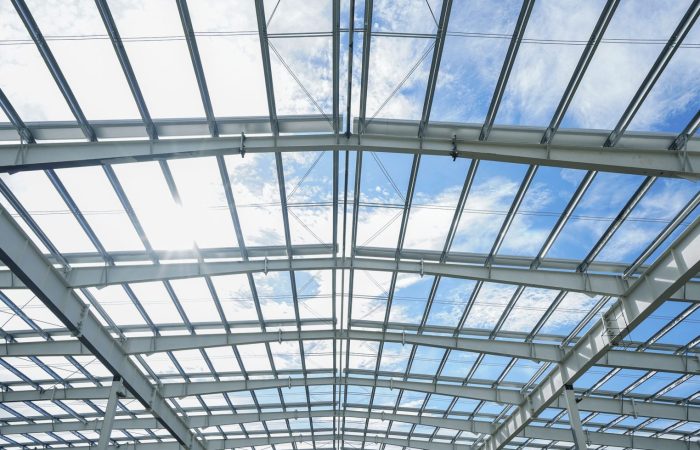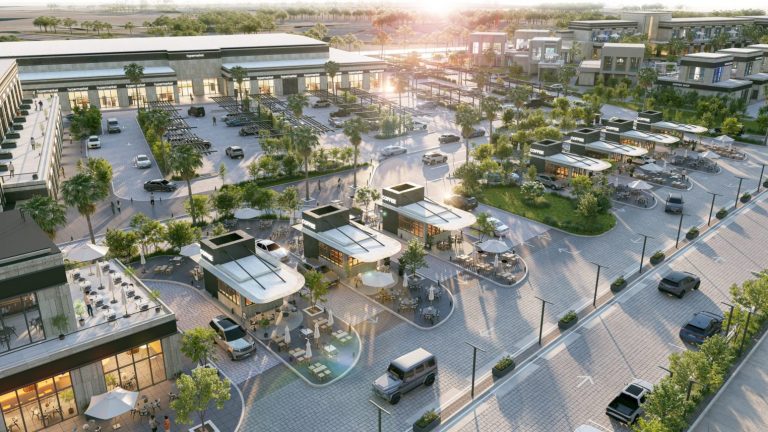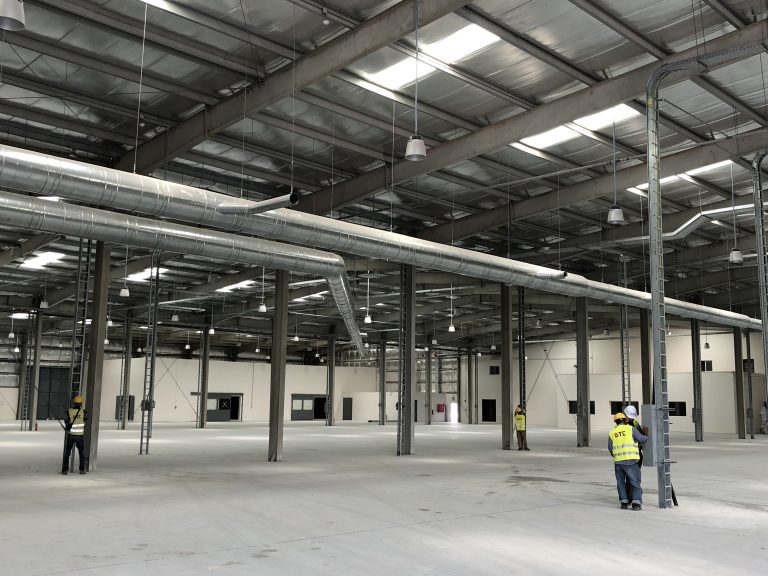warehouse roof construction
The average warehouse is a big, open space with a flat roof. But that doesn’t mean that all warehouses are created equal. In fact, there are many different types of warehouse roofs, each with their own set of benefits and drawbacks. In this article, we’ll explore the most common types of warehouse roofs and their construction. We’ll also touch on the factors you should consider when choosing a roof for your warehouse. By the end, you should have a better understanding of which roof is right for your needs.
warehouse roof construction
There are a few factors to consider when constructing a warehouse roof. The first is the climate. If you live in an area with high winds, you’ll need to take that into account when choosing materials. The second is the weight of the materials you’ll be using. You don’t want your roof to collapse under the weight of snow or ice. Finally, you’ll need to think about ventilation. If your warehouse gets hot in the summer, you’ll need to make sure there’s enough airflow to keep things cool.
When it comes to materials, there are a few options for warehouse roofs. Metal is a popular choice because it’s durable and can withstand heavy weights. However, it can be expensive and is susceptible to corrosion in salty or humid climates. Shingles are another option, and they come in a variety of materials including asphalt, wood, and slate. They’re less expensive than metal roofs, but they’re not as durable and can be damaged by hail or high winds. Tile roofs are also an option, but they’re expensive and can be fragile.
The best way to Ventilate your warehouse will vary depending on the climate where you live. In hot climates, you’ll need to make sure there’s enough airflow to keep things cool. This can be done with vents in the roof or by opening up windows and doors during the cooler hours of the day. In cold climates, you’ll need to make sure your warehouse doesn’t get too cold by ins
What type of roof is ideal for warehouses?
There are several types of roofs that can be used for warehouses, but the most ideal roof is a metal roof. Metal roofs are durable and can withstand heavy snow and wind loads, which is important for protecting the contents of the warehouse. They are also fire resistant, which is another important consideration for warehouses.
Commonly Used Warehouse Roofing Materials
There are a variety of roofing materials that can be used on warehouse roofs, depending on the climate and the specific needs of the building. Metal roofs are a popular choice for warehouses because they are durable and low maintenance. In areas with high winds or severe weather, metal roofs can offer superior protection against damage.
Concrete and clay tile roofs are also common choices for warehouses. These materials are fire resistant and can help to keep the interior of the building cooler in hot weather. Tile roofs can be more expensive than metal roofs, but they may last longer if properly maintained.
Asphalt shingles are another option for warehouse roofing. They are less expensive than tile or metal roofs, but they may not last as long in areas with severe weather conditions. Asphalt shingles can be replaced more easily than other types of roofing material, making them a good choice for warehouses that require frequent repairs or replacement.
What are the types of roofs in construction?
The types of roofs in construction are many and varied. They include gabled, hipped, shed, flat, mansard, Gambrel, and hip roofs. Each type has its own unique characteristics that make it well-suited for specific applications.
Gabled roofs are the most common type of roof in construction. They have two sloping sides that come together at a ridge to form a peak. The pitch of the gables can be varied to suit the needs of the structure.
Hipped roofs are similar to gabled roofs, but they have four sloping sides instead of two. This gives the roof more stability and makes it better able to withstand high winds.
Shed roofs are single-sloped and have a very simple design. They are often used on outbuildings such as storage sheds or workshop buildings.
Flat roofs are exactly what they sound like – they are completely flat with no slope whatsoever. They are commonly used on commercial buildings and can be made from a variety of materials including asphalt, rubber, and gravel.
Mansard roofs have two slopes on each side with the lower slope being much steeper than the upper one. This creates additional living space in the attic or upper levels of the structure.
Gambrel roofs are similar to mansard roofs except that both slopes on each side are equal in size. This makes them ideal for barns and other structures where extra space is needed for haylo
What are 5 common roofing systems?
There are a variety of roofing systems that can be used on a warehouse, but five of the most common are built-up roofs, corrugated metal roofs, standing seam roofs, membrane roofs, and Green roofs.
1. Built-up Roofs: A built-up roof is typically composed of multiple layers of asphalt or tar paper that are held in place with nails or screws and then covered with gravel or another type of protective layer.
2. Corrugated Metal Roofs: Corrugated metal roofs are made from panels of metal that have been formed into wave-like shapes. These roofs are usually made from galvanized steel or aluminum and can be painted to match the warehouse exterior.
3. Standing Seam Roofs: Standing seam roofs are composed of long, continuous panels of metal that are joined together at seams that run vertically up the roof. These seams are then sealed with an adhesive or welded together to create a watertight seal.
4. Membrane Roofs: Membrane roofs are made from a single piece of synthetic material, such as PVC or TPO, that is stretched over the entire roof surface and then fastened down at the edges.
5. Green Roofs: Green roofs are vegetative rooftops that provide insulation and help to reduce stormwater runoff. They typically consist of a layer of soil topped with grasses, sedums, or other drought-tolerant plants
What are the four types of roofing?
1. Metal Roofing: Metal roofing is a popular choice for warehouses because it is durable and can withstand heavy snow and wind loads. It is also fire resistant and reflective, which can help keep your warehouse cooler in the summer.
2. PVC Roofing: PVC roofing is another popular choice for warehouses because it is durable and easy to maintain. It is also fire resistant and has a high reflectivity, which can help keep your warehouse cooler in the summer. PVC roofing can be more expensive than metal roofing, but it may last longer.
3. EPDM Roofing: EPDM roofing is a synthetic rubber that is commonly used for commercial roofs because it is very durable and easy to install. It is also fire resistant and has a high reflectivity, which can help keep your warehouse cooler in the summer. EPDM roofing can be more expensive than metal or PVC roofing, but it may last longer.
4. asphalt shingle Roofs: Asphalt shingle roofs are commonly used on residential homes, but they can also be used on warehouses. They are easy to install and relatively inexpensive, but they do not have the same lifespan as metal, PVC, or EPDM roofs.
What pitch is a warehouse roof?
The pitch of a warehouse roof is the angle at which the roof slopes. The most common pitch for warehouses is 4:12, which means that the roof slopes 4 inches for every 12 inches of horizontal distance. Some warehouses have a higher pitch, such as 6:12 or 8:12, to allow for better drainage and to provide more headroom inside the warehouse.
Why are warehouse roofs flat?
The most common type of warehouse is the single-story, rectangular building with a flat roof. There are several reasons why these types of warehouses have become so popular. First, they are less expensive to construct than buildings with pitched roofs. Second, the large, open interior space is perfect for storing and moving merchandise around. And third, flat roofs are easier to maintain and repair than pitched roofs.
One of the main reasons that warehouse roofs are flat is because it is cheaper to build them this way. When you don’t have to worry about trusses and rafters, the construction process is simpler and less expensive. Additionally, flat roofs offer more usable space than pitched roofs. Because there is no need for an attic or storage space in the roof itself, the entire interior of the warehouse can be used for storage.
Another reason that warehouses often have flat roofs is because they are easier to maintain. Flat roofs don’t have as many nooks and crannies where water can pool and cause problems. And if there is any damage to the roof, it is usually fairly easy and inexpensive to repair.
So there you have it! Three good reasons why most warehouses have flat roofs. If you’re thinking about constructing a new warehouse, or even just renovating an existing one, keep these advantages in mind.
What are the Different Types of Warehouse Roofing?
There are several types of warehouse roofing, each with its own benefits and drawbacks. The most common type of warehouse roofing is metal roofing. Metal roofs are long lasting and fire resistant, but they can be expensive to install. Another popular type of warehouse roofing is asphalt shingle roofing. Asphalt shingle roofs are less expensive than metal roofs, but they don’t last as long. Finally, there is flat roofing. Flat roofs are the least expensive option, but they’re also the least durable.
4 Different Types of Warehouse Roofing
A warehouse is a commercial building for storage of goods. Warehouses are used by manufacturers, importers, exporters, wholesalers, transport businesses, customs, etc. They are usually large plain buildings in industrial parks on the outskirts of cities, towns or villages. They often have loading docks to load and unload goods from trucks. Sometimes warehouses are designed for the loading and unloading of goods directly from railways, airports, or seaports. They often have cranes and forklifts for moving goods around the structure. A warehouse can be defined more specifically as a storage place used for commercial purposes by manufacturers and distributors where inventory is either stored temporarily or permanently
The four different types of warehouse roofing are:
1) Gable Roof: A gable roof has two sloping sides that come together at a ridge in the middle of the roof. There are also gable roofs with only one sloping side. This type of roof is easy to construct and provides good ventilation. However, it does not shed snow and ice very well and can be damaged by high winds.
2) Hip Roof: A hip roof has four sloping sides that come together at the top of the roof. This type of roof is more resistant to high winds than a gable roof but is more difficult to construct. It also does not shed snow and ice very well.
3) Flat Roof: A flat roof is just what it sounds like – a completely flat
Warehouse Roofing: Options & Big Benefits
There are many roofing options for warehouses, each with their own unique benefits. Here are some of the most popular options:
Metal Roofing: Metal roofing is one of the most durable and long-lasting roofing materials available. It’s also fire-resistant and energy-efficient, making it a great option for warehouses.
Asphalt Shingles: Asphalt shingles are a popular choice for warehouse roofs because they’re affordable and easy to install. They’re also available in a variety of colors and styles to match your warehouse’s aesthetic.
Rubber Membrane: Rubber membrane roofs are extremely durable and waterproof, making them ideal for warehouses in wet or humid climates. They’re also energy-efficient and reflective, helping to keep your warehouse cooler in summer months.
There are many other roofing materials available as well, including solar panels, green roofs, and more. Ultimately, the best roofing material for your warehouse will depend on your specific needs and preferences.
Different Types of Warehouse Roofing
Warehouse roof construction can be a complex and costly undertaking, so it’s important to consider all of your options before deciding on a roofing system. There are many different types of warehouse roofing available, each with its own benefits and drawbacks.
Metal roofs are one of the most popular choices for warehouses due to their durability and low maintenance requirements. However, metal roofs can be susceptible to rust and corrosion over time, so they may not be the best option in areas with high humidity or exposure to salt air.
Concrete roofs are another popular option for warehouses. Concrete is extremely durable and low-maintenance, but it can be expensive to install. Additionally, concrete roofs are very heavy, so they may not be suitable for all types of warehouse structures.
Asphalt shingle roofs are a more budget-friendly option than metal or concrete, but they don’t offer the same level of protection from the elements. Asphalt shingles can also be damaged by high winds or hail, so they may not be the best choice in hurricane-prone areas.
Rubber membrane roofs are a good choice for warehouses that need extra protection from the elements, as they’re highly resistant to wind, fire, and UV rays. However, rubber membrane roofs can be more expensive than other types of warehouse roofing, and they’re not as widely available as some other options.
Best Warehouse Roofing Materials
There are many roofing materials on the market, but not all of them are suitable for warehouse roofs. Here are some of the best materials for warehouse roofs:
Metal Roofs: Metal roofs are durable and low maintenance. They can also be designed to meet specific needs, such as fire resistance or energy efficiency.
Modified Bitumen Roofs: Modified bitumen roofs are similar to asphalt shingles, but they’re reinforced with fiberglass or polyester matting. This makes them more durable and longer lasting.
Single-Ply Membrane Roofs: Single-ply membrane roofs are made from a single layer of material, usually PVC or EPDM rubber. They’re lightweight and easy to install, and they offer good resistance to weather and UV rays.
Spray Polyurethane Foam Roofs: Spray polyurethane foam roofs are made from two liquids that are mixed together and sprayed onto the roof surface. The foam expands and hardens into a solid, seamless membrane. This type of roof is extremely durable and resistant to weathering.














